Namibia, Botswana & Victoria Falls
Highlights
Highlights
- Witness the world-famous Victoria Falls
- Visit Etosha National Park and Botswana’s Okavango Delta
- Visit Damaraland – dramatic landscapes and home to desert adapted wildlife
- Explore the Caprivi Strip – uniquely shaped wildlife haven full of history
Map
Map
Overview
Tour Overview
The three countries of Namibia, Botswana, and Zambia offer some of the richest birding and wildlife experiences in all of Africa.
This extraordinary journey takes you through a wide variety of habitats—from Zambia’s miombo woodlands and the lush Okavango Delta and riverine forests of Botswana, to the iconic red dunes of the Namib Desert and the vast salt pans and savannas of Etosha National Park. We also explore the rich coastal wetlands of Walvis Bay and end at the awe-inspiring Victoria Falls, one of the natural wonders of the world. These diverse ecosystems support an incredible array of birds, including Southern Carmine Bee-eater, Pel’s Fishing Owl, Slaty Egret, Racket-tailed Roller, White-collared and Bare-cheeked Babblers, Rockrunner, and Hartlaub’s Spurfowl, along with a wealth of larks, coursers, and other desert-adapted species.
Our Namibia, Botswana & Victoria Falls Birding Tour combines superb birding—with many regional endemics and specialties—outstanding wildlife viewing (including excellent chances of seeing the Big Five), breathtaking scenery, and comfortable accommodations. It’s an unforgettable African safari for birders and nature lovers alike.
Dates & Prices
DATES & PRICES
What's Included
What's Included
Tour Price Includes
- All accommodation
- All meals and soft drinks
- National Park and Reserve entrance and conservation fees (Including single day entrance into Victoria Falls)
- All transport in Namibia, Botswana and Zambia for the duration of the tour
- Guided activities (boat rides)
- Guides
Tour Price Does Not Include
- Flights to and from start/end location
- Visa fees
- Travel Insurance
- Alcoholic Drinks
- Items of a personal nature (laundry, souvenirs)
- Gratuities
Gallery
Gallery
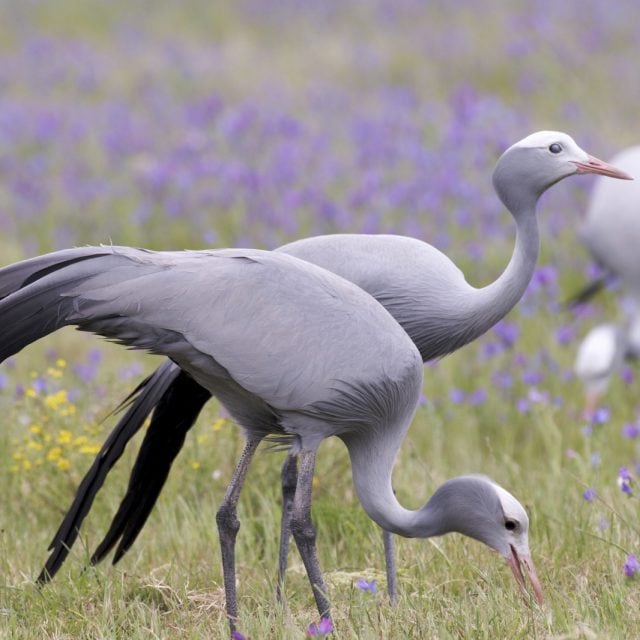


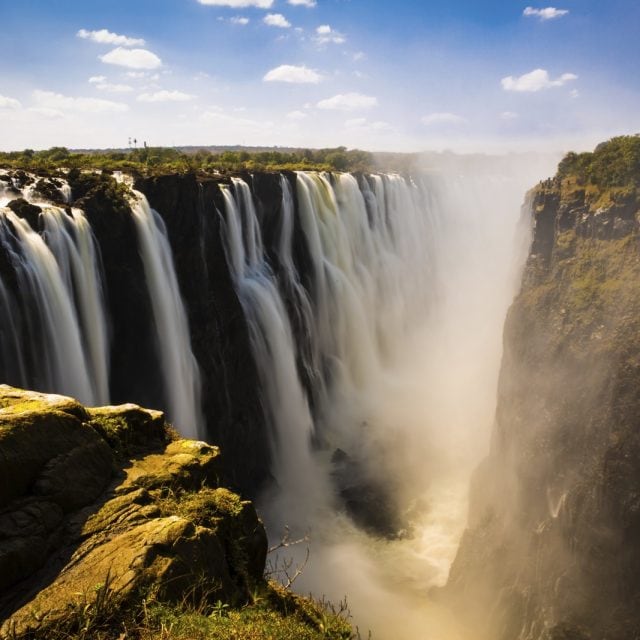


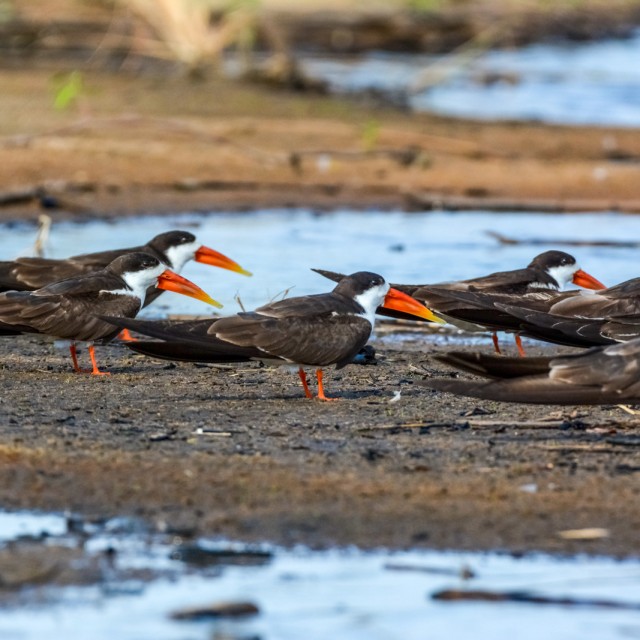
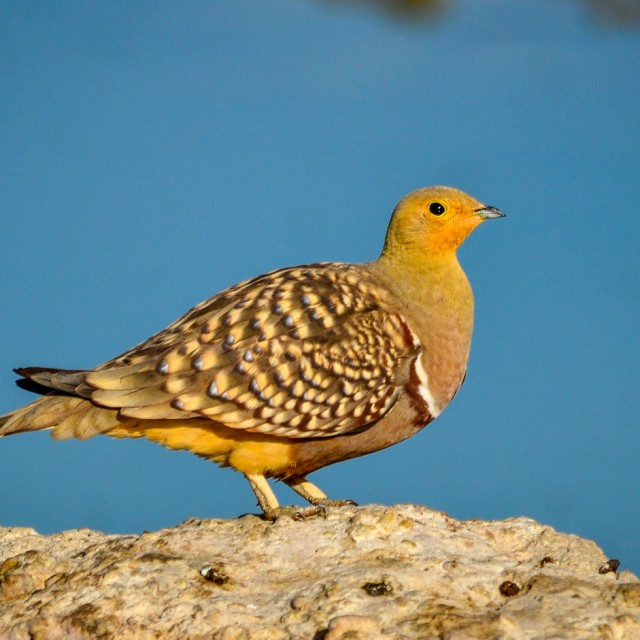
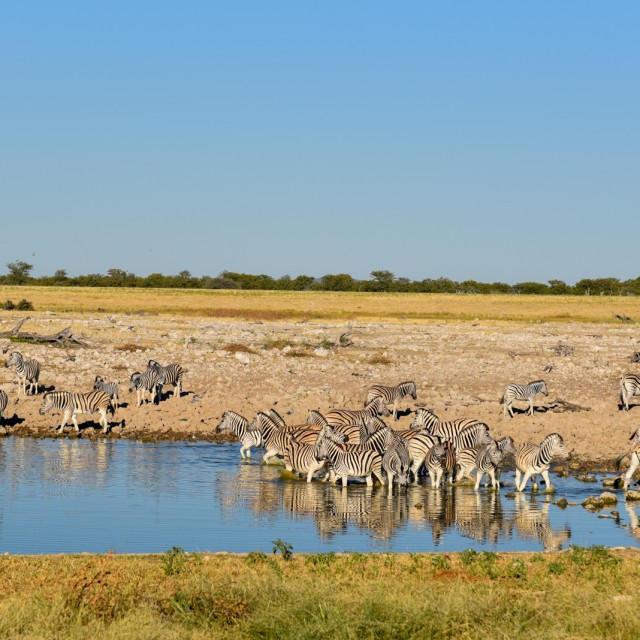
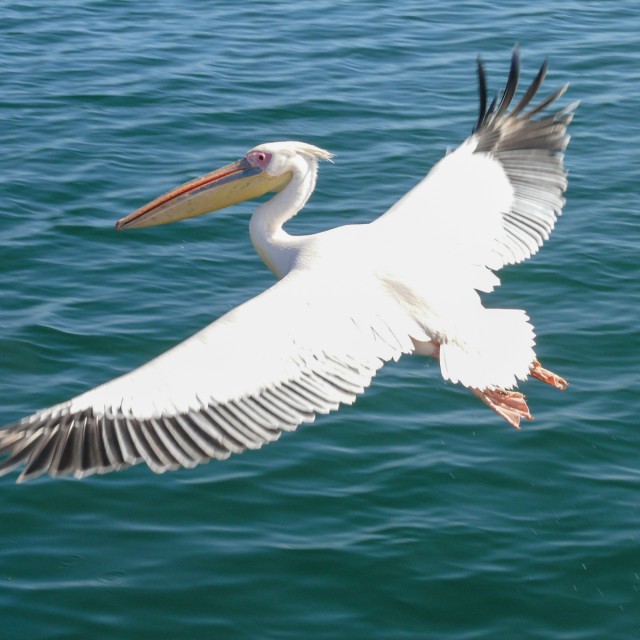
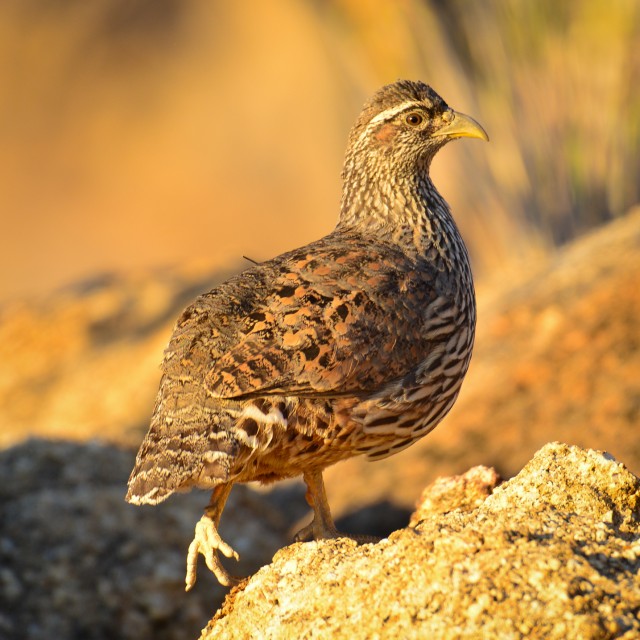
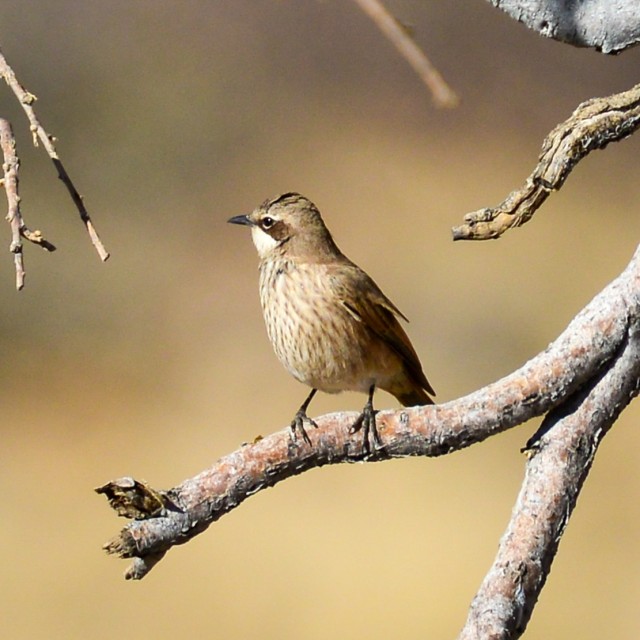
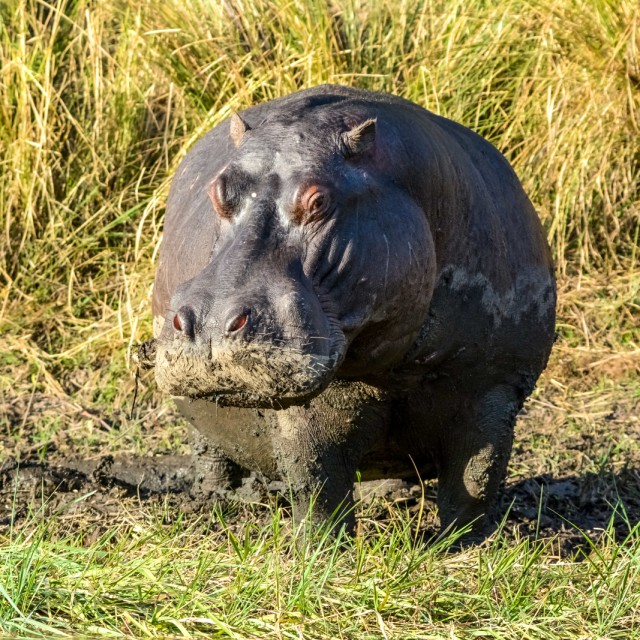
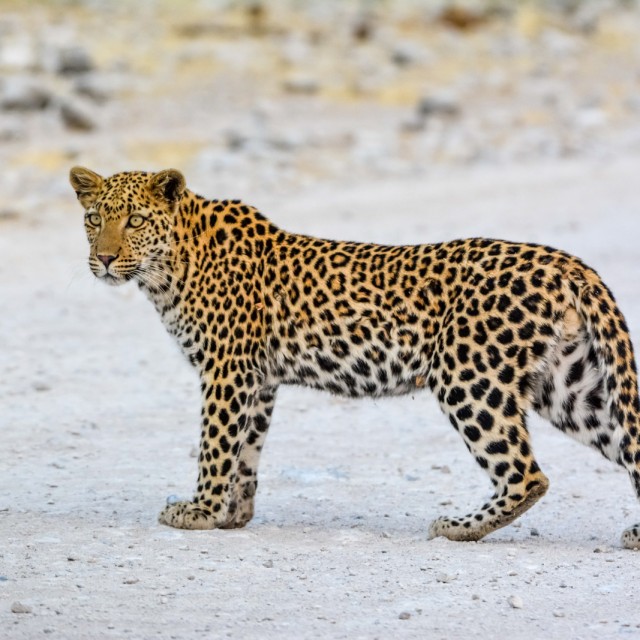
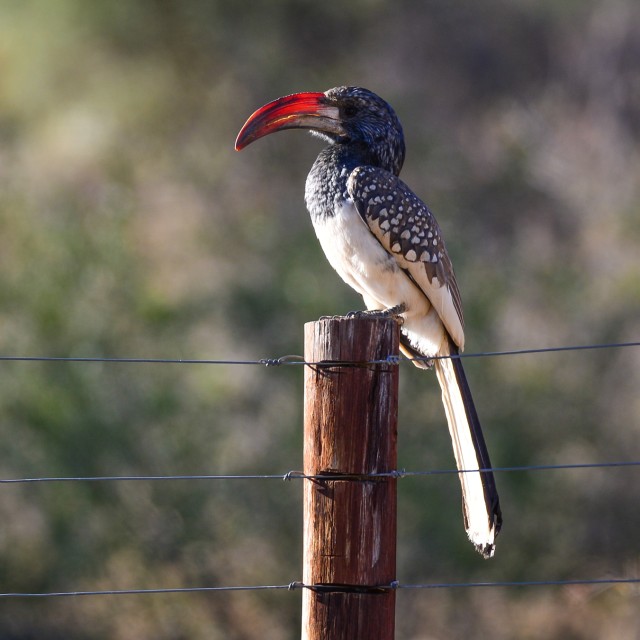
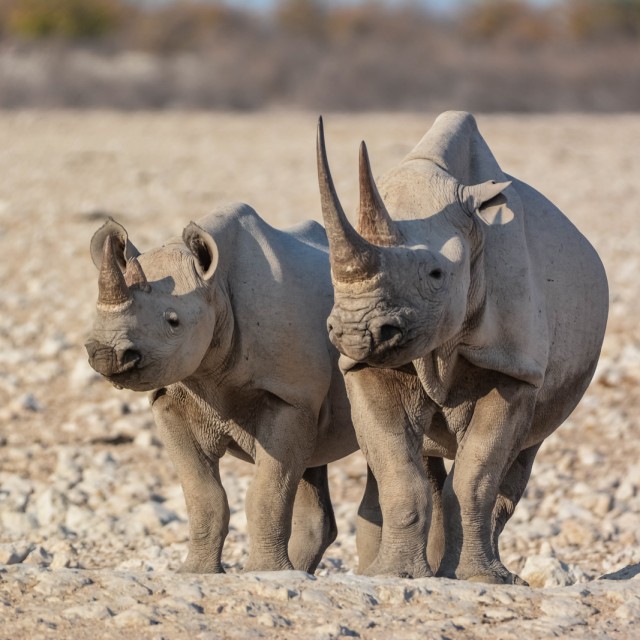

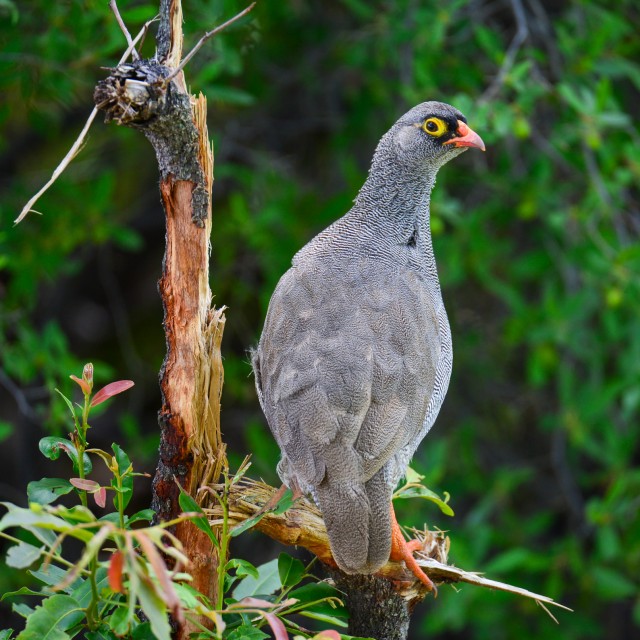
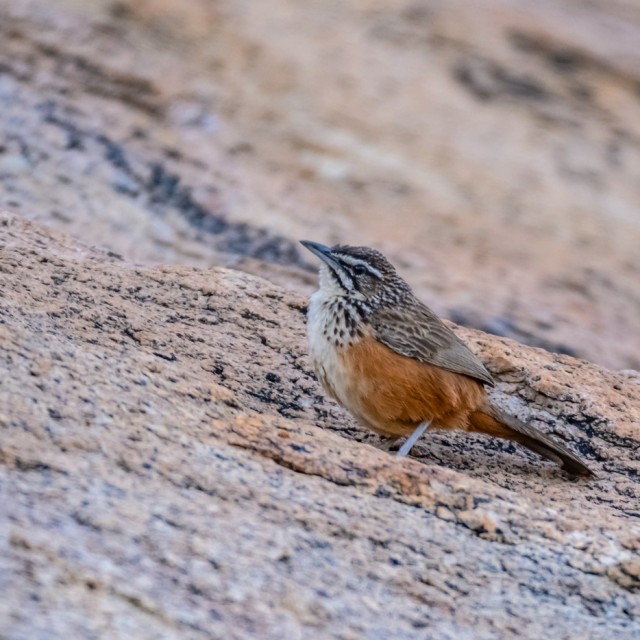
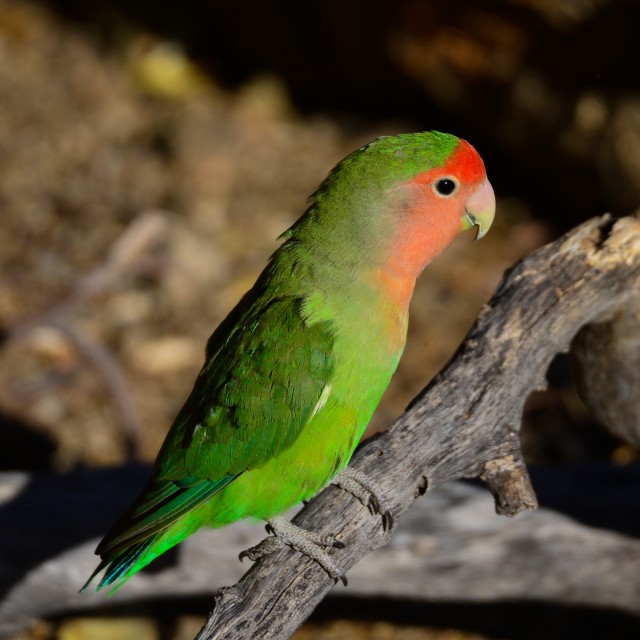
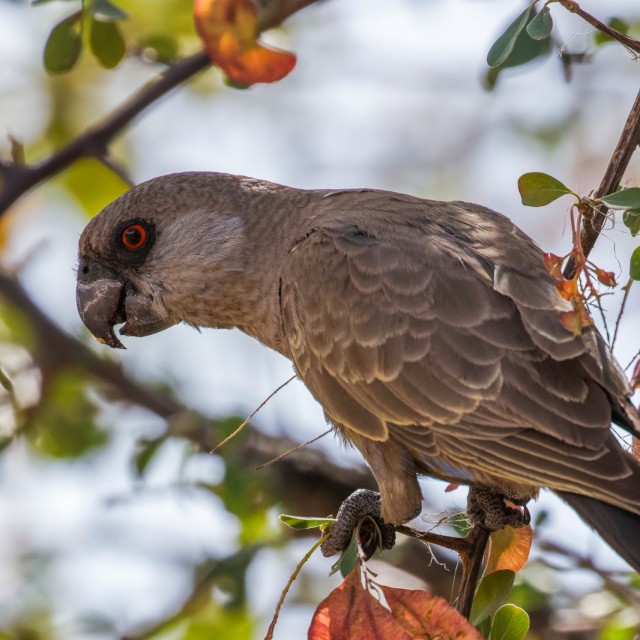
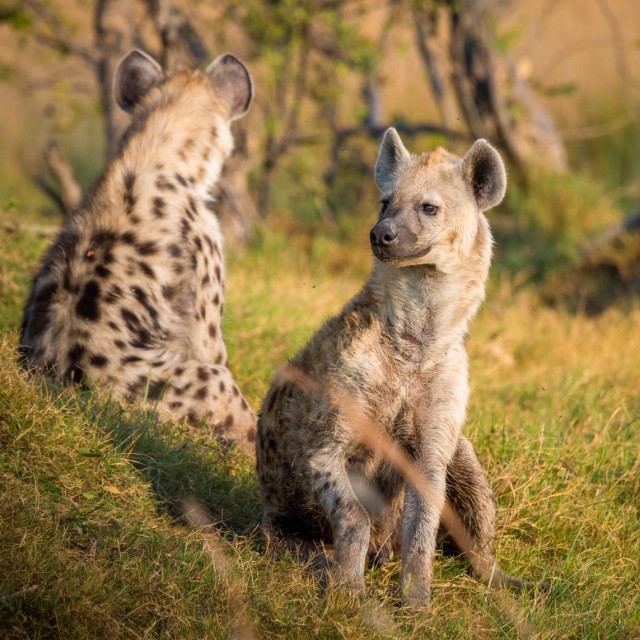
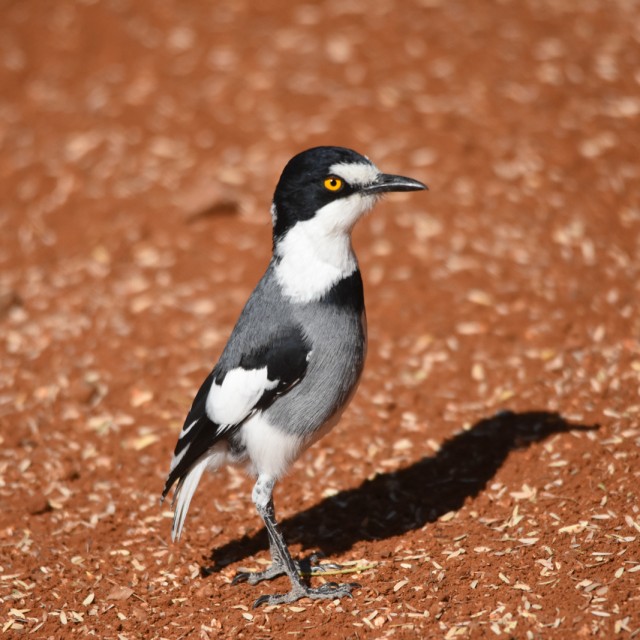
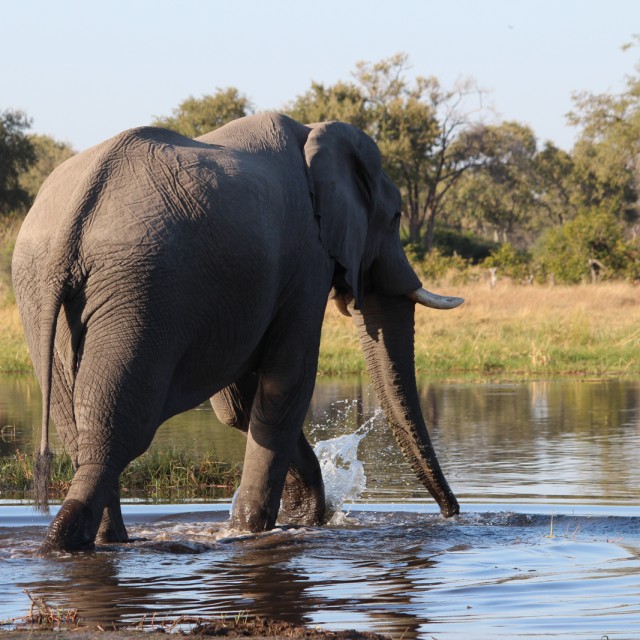
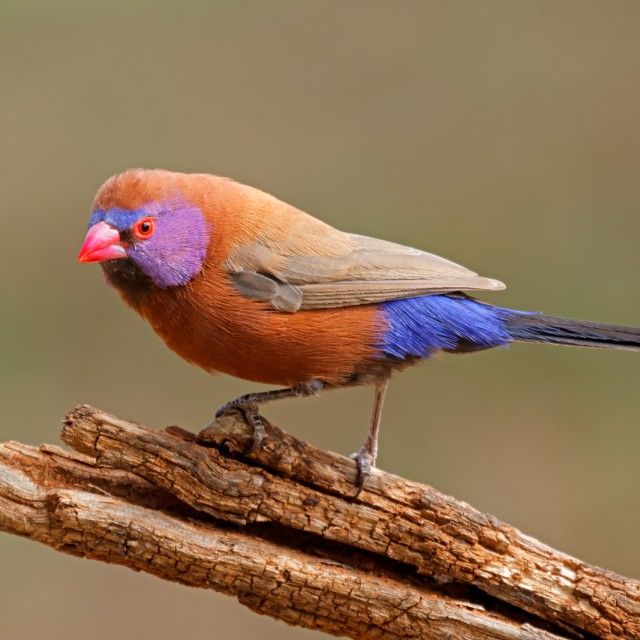
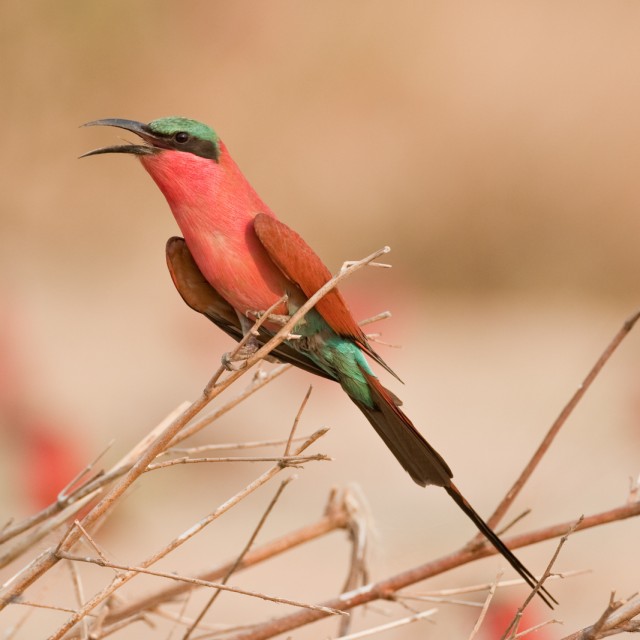
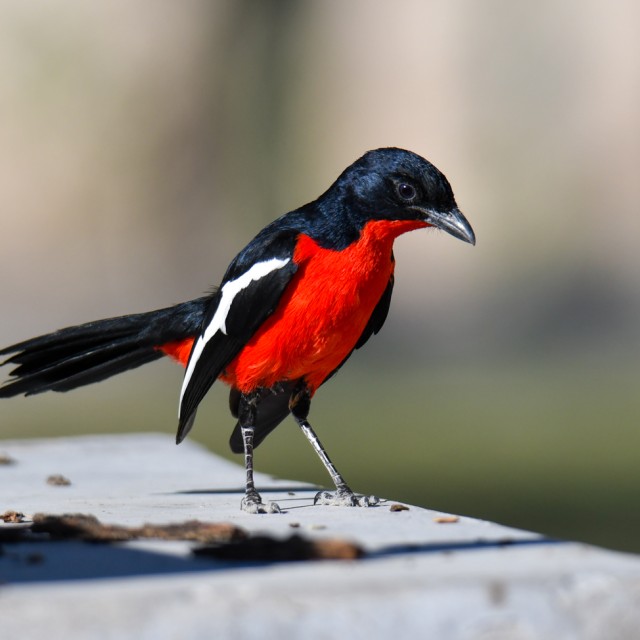
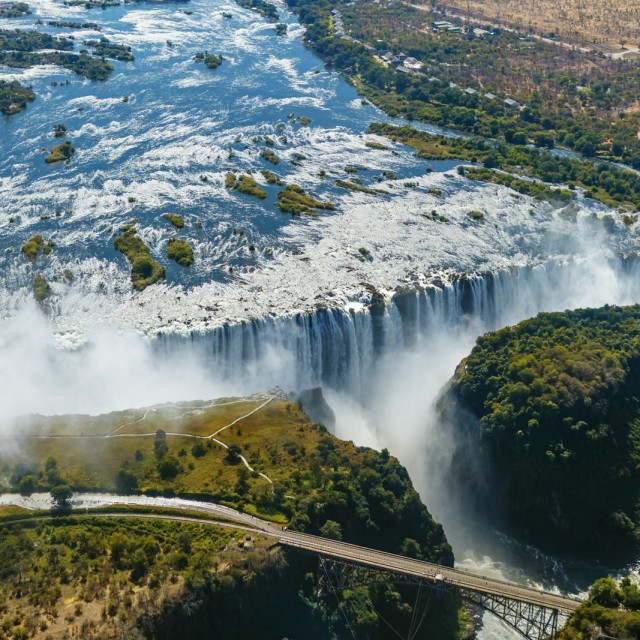
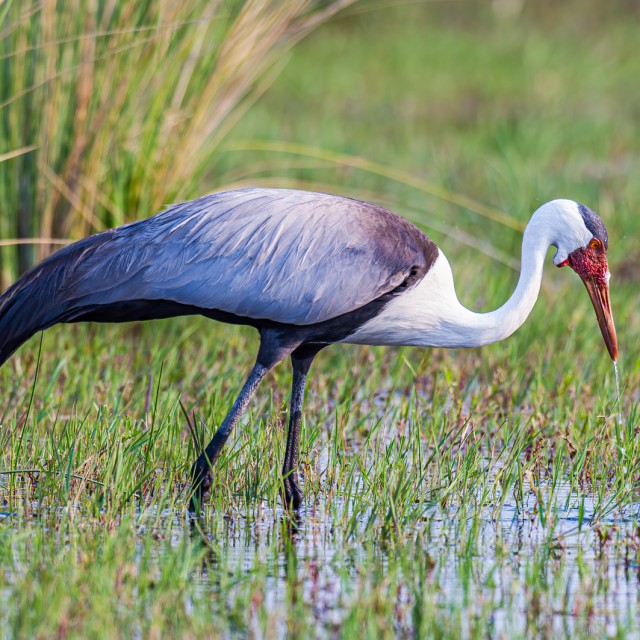
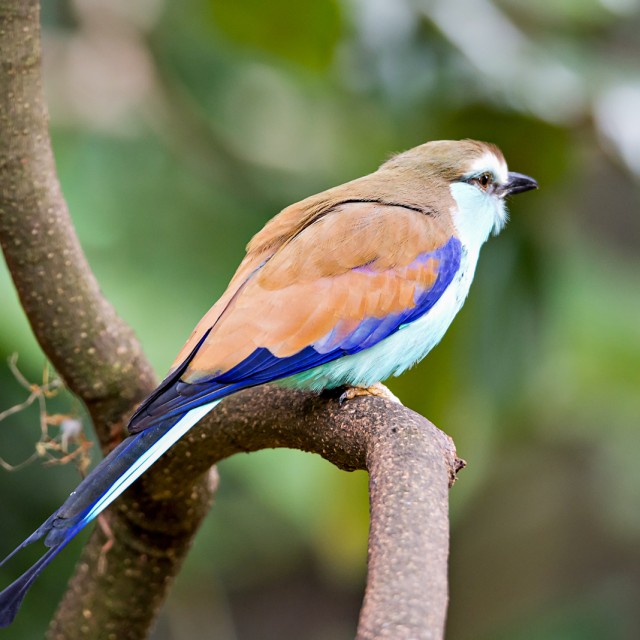
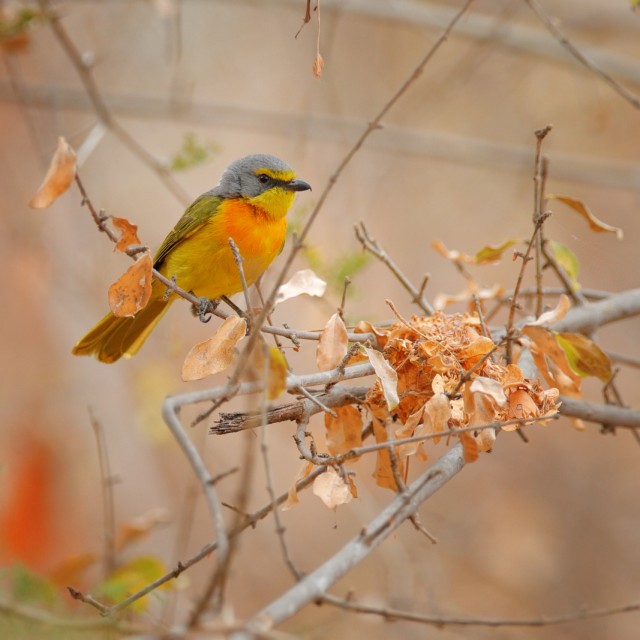
Itinerary
Itinerary
Day 1: Start of tour in Walvis Bay, Namibia
Our exciting Namibia, Botswana and Zambia birding tour (“NBZ” for short) starts today in the town of Walvis Bay on the Atlantic coastline of Namibia. Get ready for an amazing experience!
Walvis Bay (literally meaning “Whale Bay” in Afrikaans), with its large bay and sand dunes, is an important centre of tourism activity in Namibia and a favourite spot for internationals and locals alike. The juxtaposition of the desert dunes and the ocean creates a unique and picturesque landscape.
We will begin with a welcome dinner and will discuss the exciting itinerary ahead. Night in Walvis Bay.
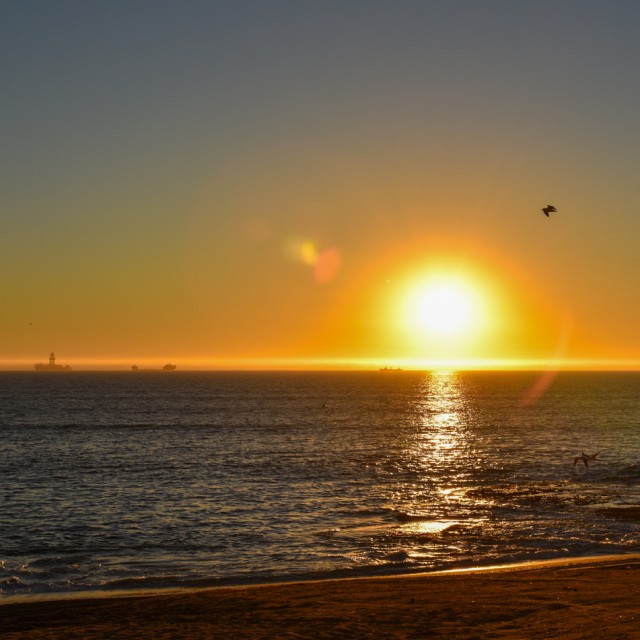
Day 2: Walvis Bay
We will spend a full day exploring the birding hotspots in and around Walvis Bay. We will visit the famous Walvis Bay lagoon, which has been declared a Ramsar site of global importance for the thousands of waders that are found here. It is regarded as the most important coastal wetland in all of southern Africa and is a significant stopover point for migratory birds along the African-Eurasian flyways.
One of our main targets today will be the Damara Tern. Other birds we hope to find include Great White Pelican, Ruff, Little Stint, Sanderling, Curlew, Terek and Pectoral Sandpiper, Black-necked Grebe, Red-necked Phalarope, Bar-tailed and Black-tailed Godwit, Common and Spotted Redshank, Whimbrel, Eurasian Curlew, Swift, Common, Sandwich, Black and Caspian Tern, African Oystercatcher, Common Ringed, Chestnut-banded, Gray and Three-banded Plover, Hartlaub’s and Gray-headed Gull, Cape Gannet, Gray and Black-headed Heron, Great White Pelican, and Greater and Lesser Flamingo. Cape Cormorants are usually spotted in huge flocks and we will also look for Crowned and White-breasted Cormorant and if we are lucky even Bank Cormorant.
The great thing about this area is that almost anything can turn up so we have the possibilities to see a rarity or two. Pomarine Jaeger and Subantarctic Skua are sometimes seen from the shoreline. Also look out for American and Pacific Golden Plover, Eurasian Oystercatcher, Broad-billed Sandpiper and Franklin’s Gull. Night in Walvis Bay.
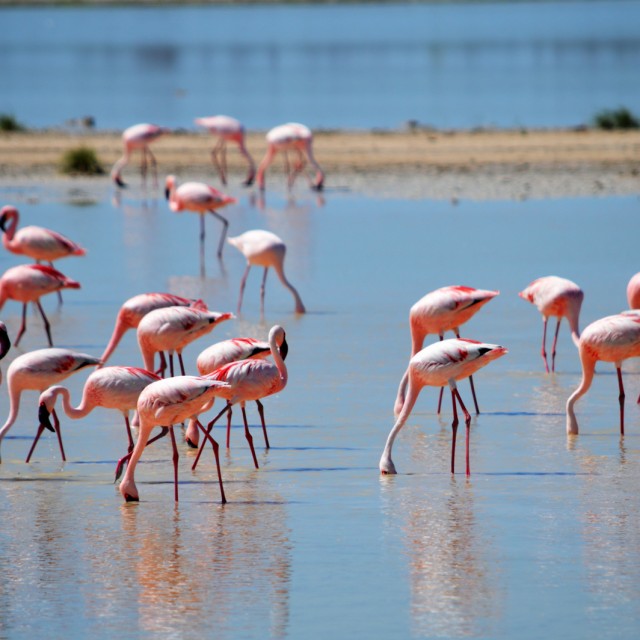
Day 3: Walvis Bay to Erongo
This morning we will focus on finding Dune Lark, Namibia’s only true endemic and a great bird to find. We will spend time in the scenic Kuiseb riverbed searching for this special species at the base of some of the impressive dunes that form a beautiful backdrop.
This hard-to-find sandy-coloured lark survives in this harsh environment without any water, instead getting everything it needs to survive from seeds and insects found in the sparsely vegetated areas between the dunes in the desert. In fact there are no known records of it ever drinking even a drop of water!
Other interesting birds we might see here include Bokmakierie, White-backed Mousebird, Cape and Great Sparrow, Chestnut-vented Warbler, Dusky Sunbird, Gray-backed Cisticola, Jackal Buzzard, Pale Chanting Goshawk and the desert form of the Tractrac Chat.
We then make our way north to the Erongo region of Namibia. Erongo is known for its stunning natural landscapes. It is home to the Erongo Mountains, a rugged range characterized by granite peaks, deep valleys, and impressive rock formations.
The granite hills surrounding the beautiful lodge where we will stay for two nights are famous for Hartlaub’s Spurfowl and Rockrunner. Besides these two specials we can look for Rüppell’s Parrot, Carp’s Tit, White-tailed Shrike, Monteiro’s and Damara Red-billed Hornbill, Violet Wood Hoopoe, Pale-winged Staring, Red-billed Spurfowl, Augur Buzzard, Peregrine Falcon, African Hawk-eagle, Booted Eagle, vultures, and Cinnamon-breasted, Golden-breasted, Cape and Lark-like Bunting.
Dassie Rat and Common Rock Hyrax are common mammals while the endemic Kaokoveld Slender Mongoose, Leopard and Caracal are seen quite often. Western Barn Owl and Freckled Nightjar are seen on most evenings at the floodlit waterhole. Night in Erongo.
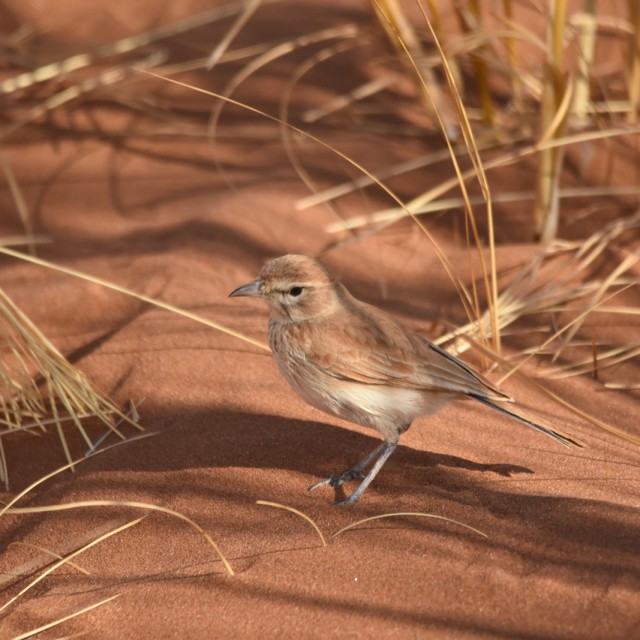
Day 4: Erongo
We have a full day to explore the trails around our accommodation as well as areas further afield. We will enjoy all our meals at the lodge today, and bird in the morning and afternoon.
Rosy-faced Lovebirds are present in massive numbers and we will also tick general scrub savannah birds like White-throated, Yellow and Black-throated Canary, Green-winged Pytilia, Short-toed Rock Thrush, Violet-eared, Black-cheeked and Blue Waxbill, Barred Wren-warbler, Rattling Cisticola, Marico Flycatcher, Pririt Batis, Shaft-tailed Whydah, African Red-eyed Bulbul, White-backed Mousebird, Cape Starling and Mountain Wheatear. Night in Erongo.
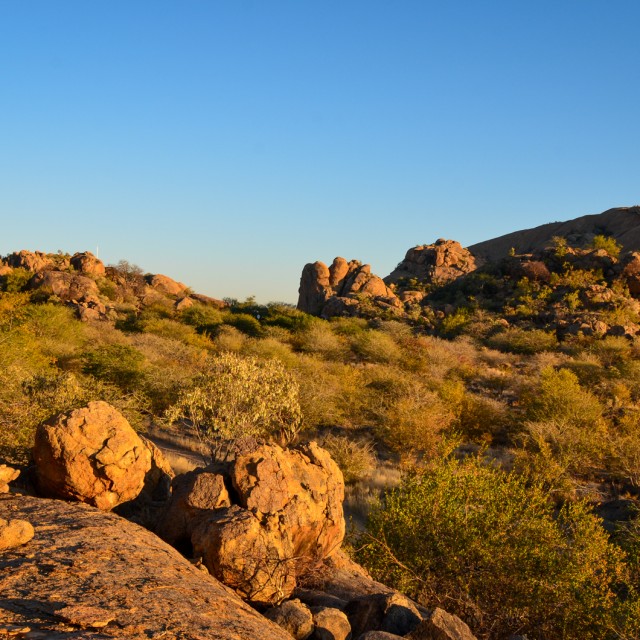
Day 5: Erongo to Brandberg
After an early breakfast we make our way north to Damaraland. It is a region in the north-central part of the country, bounded to the west by the Atlantic Ocean, to the east by the Kalahari desert, to the north by Kaokoland, and to the south by the Great Namaqualand. It is a visually dramatic area, with rugged rocks, prehistoric water courses, open plains and grassland, massive granite koppies (hills) and deep gorges. Get your cameras ready!
This beautiful mountainous region is home to an assortment of scientifically important desert-adapted wildlife such as elephant, rhino, zebra and lion, which somehow survive and thrive in this near-barren landscape. We hope to see some of them - a special treat indeed!
We are heading for the arid plains around the Brandberg Mountain (literally “fire mountain” in Afrikaans), Namibia’s highest mountain (2,573 m/ 8,442 ft above sea level), where we will spend the night and search for specific target birds. The Brandberg holds spiritual and mystical significance for the local Damara and Herero communities. Many believe that the mountain is a sacred site with supernatural powers.
We will scan the plains north of the mountain for Rüppell’s Korhaan, Burchell’s Courser, Bokmakierie and Benguela Long-billed Lark. The hills will hopefully produce Herero Chat, arguably the toughest of the endemics to find, and Yellow-bellied Eremomela, Cape Penduline Tit and Gray-backed Cisticola can also be ticked here.
Our tranquil lodge is situated close to the (dry) Ugab River where we hope to see Violet Wood Hoopoe and Bare-cheeked Babbler. Rüppell’s Parrot and Augur Buzzard can be found here as well. Sometimes the desert adapted wildlife come right up to the lodge!
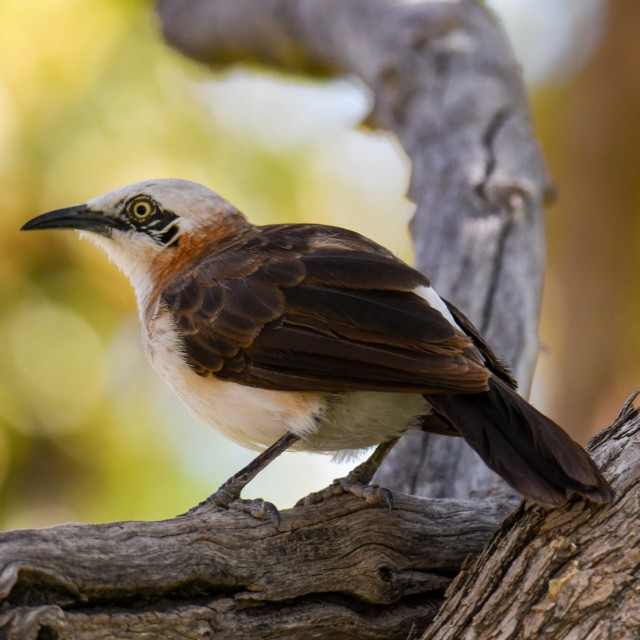
Day 6: Brandberg to Etosha National Park
We will start with an early breakfast, and then spend the morning birding around the Brandberg, making sure we pick up all the species we still need. We will make our way further north to the famous Etosha National Park, our home for the next 4 nights. Etosha National Park covers more than 22,300 km2 (8,620 sq mi) and is synonymous with big game and wide open spaces. The name Etosha actually means “great white place” referring to the huge dry salt pan in the middle of the park, believed to have been formed over 100 million years ago.
Etosha is one of the main reasons visitors from all over the globe come to Namibia, and is home to a staggering amount of wildlife, both common and rare, including several threatened and endangered species. The mammal list is over 110 species, including four of the famed Big Five. Etosha has no African Buffalo, but excitingly there is currently a conservation program on the go to reintroduce African Wild Dogs.
Etosha also has a bird list of more than 350 species, and has the odd record of having the smallest southern African bird, the Cape Penduline Tit, the world’s largest bird, the Common Ostrich, and the world’s largest flying bird, the Kori Bustard, all in one park! The sight of thousands of bright pink flamingos in the Etosha pan after summer rain is something one never forgets.
We will reach our first camp (2-nights), Okaukuejo, late in the afternoon and check in to our rooms. The camp grounds themselves are very productive, and here we could see Crimson-breasted Shrike, Groundscraper Thrush, Pririt Batis, Chestnut-vented Warbler, Red-headed Finch, Acacia Pied Barbet and South African Ground Squirrel.
We will enjoy dinner in the restaurant and update our lists, and then walk to the famous floodlit waterhole in the camp. We will sit quietly with a drink in hand and we look for Verreaux’s Eagle-Owl, Western Barn Owl and Rufous-cheeked Nightjar, and we could even see Black Rhinoceros come for a drink. There might also be African Elephant, Lion, Giraffe, Gemsbok, Greater Kudu, Springbok, Common Warthog and many other animals. Sitting here will make you realise why Etosha is such a special place.

Day 7: Etosha National Park (Southern)
We have a full day to enjoy this section of Etosha, returning to Okaukuejo Camp for lunch and dinner.
The area around camp should produce Dusky and Scarlet-chested Sunbird, Crimson-breasted Shrike, Acacia Pied Barbet, Golden-tailed Woodpecker, Southern White-crowned Shrike, Marico and Chat Flycatcher, Rattling Cisticola, Double-banded and Namaqua Sandgrouse, Swallow-tailed Bee-eater, Common Ostrich, Kori Bustard, Northern Black and Red-crested Korhaan and Great Sparrow to name a few. We will scan on top of all the huge Sociable Weaver nests for Pygmy Falcon.
We will also use the late afternoon to bird the Okondeka plains north of the camp where we will look for Spike-heeled, Pink-billed, Eastern Clapper, Red-capped and Sabota Lark as well as Gray-backed and Chestnut-backed Sparrow-lark, Capped Wheatear, Double-banded Courser, Ant-eating Chat, Desert Cisticola and Rufous-eared Warbler. The waterhole in this area is also famous as being the best place in the park to see Lions. Night: Etosha National Park (West)

Day 8: Etosha National Park (Southern to Eastern)
After breakfast we will make our way eastwards as we continue to explore this great park. We will stop at waterholes during our drive, as this is where the mammals congregate. We will obviously also stop for interesting birds along the way. And keep your cameras at the ready, as Etosha is a photographer’s dream, with the contrasts in light, colour and textures particularly dramatic. Many a guest’s “lifer shots” of African animal and bird species were taken in this park.
We will stop for lunch at Halali camp, and if there is time we will take a short stroll to the famous waterhole that can be seen from inside the camp. All sorts of mammals come to drink here, and every now and again something truly spectacular happens!
Halali camp itself is known for sightings of Violet Wood Hoopoe, Carp’s Tit, Bare-cheeked and Southern Pied Babbler, White-crested Helmetshrike, Damara Red-billed Hornbill, Greater Blue-eared Starling, African Scops Owl and Southern White-faced Owl.
Etosha is also well known for vultures and we might see Lappet-faced, White-backed, White-headed and Hooded Vulture. Every now and again an Egyptian Vulture even turns up!
Our accommodation for the next two nights is right on the eastern doorstep of Etosha, situated in the mopane woodland of the region. We will exit at the eastern (Von Lindequist) gate and drive the short distance to our lodge for listing, dinner and a good night’s sleep.
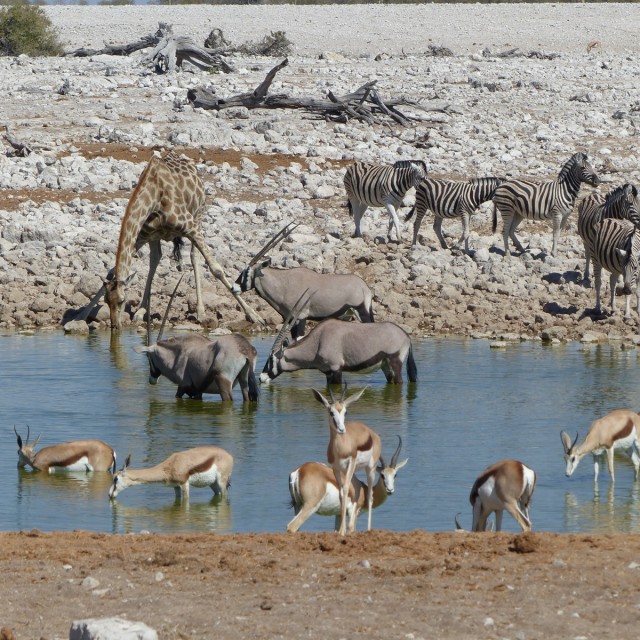
Day 9: Etosha National Park (Eastern)
Today will be dedicated to exploring the east-central section of the vast Etosha National Park. We will either have an early breakfast at the lodge or a packed one that we will enjoy at one of the waterholes dotted around the park.
We will enter the park after a few minutes’ drive at the eastern gate. We will look for Monotonous and Rufous-naped Lark, Red-billed Buffalo Weaver, Burnt-necked Eremomela and Violet-eared Waxbill. We will also keep an eye out for Etosha’s raptors, which include Martial and Tawny Eagle, Black-chested and Brown Snake Eagle, Lanner, Peregrine and Red-necked Falcon, Bateleur, and Pale Chanting and Gabar Goshawk.
The major attraction and unique feature in Etosha are the permanent waterholes, each with its own characteristics and surroundings. It is sometimes best to sit and wait quietly and patiently for an hour or two at one of these waterholes and wait for the mammals and birds to turn up; a fantastic treat and one you will talk about for a long time!
Other species to look out for in this area of the park include Blue Crane, Black-faced Babbler, Swainson’s Spurfowl, Blue Waxbill, Chestnut Weaver, White-browed Robin-chat, Emerald-spotted Wood Dove, Cape Starling, Double-banded Courser and Chat Flycatcher. If the Etosha pan is full of water it is transformed into a water bird spectacle with huge numbers of pelicans, Lesser and Greater Flamingo, Caspian and Chestnut-banded Plover, Red-billed and Cape Teal, Pied Avocet, Black-winged Stilt and Black-necked and Great Crested Grebe.
We will enjoy a final “Etosha dinner” at our lodge before resting up. Tomorrow another part of our exciting tour starts!

Day 10: Etosha National Park to Kavango region
Today we leave Etosha behind and head to the Kavango region of Namibia. First we head southeast, travelling through Tsumeb and Grootfontein, before heading northeast towards the town of Rundu. It is a drive of about 5 hours or so.
The region is named after the Kavango River, which forms the northern boundary of the region and serves as a natural border with Angola. The regional capital of Kavango is Rundu, which is also the country's second-largest town after Windhoek. The region is characterised by flat landscapes, savannahs, woodlands, and wetlands. The Kavango River is a vital water source, supporting agriculture, fishing, and transportation in the region.
Common birds found here include Pale and Southern Black Flycatcher, Green-capped Eremomela, Southern Black Tit, Striped Kingfisher, Meyer’s Parrot, Fork-tailed Drongo, Tinkling Cisticola, Neddicky, Coqui Francolin and Dark Chanting Goshawk.
We will spend the night next to the river at our beautiful and tranquil accommodation, complete with green lawns and large trees. Birds to look out for close to the lodge include African Fish Eagle, Marabou and Yellow-billed Stork, African Openbill, Gray and Goliath Heron, White-backed Night Heron, African Spoonbill, Sacred and Glossy Ibis, African Darter, African Jacana, Pied and Malachite Kingfisher, African Pygmy Goose and many others.
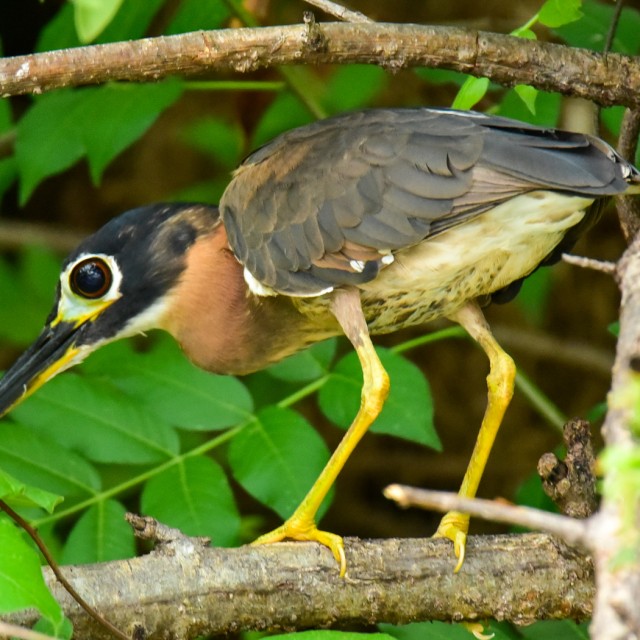
Day 11: Kavango region to Botswana
Today we head east, entering the “Caprivi strip” of Namibia. On our way we will bird the woodland between the towns of Rundu and Divundu, which offers us the chance to see some of the miombo or broadleaf woodland specials normally found further north in Zambia. These include Racket-tailed Roller, Rufous-bellied Tit, Souza’s Shrike, Green-backed Honeybird, African Hobby and, if we are extremely lucky, even Sharp-tailed Starling.
Just after Divundu, we turn south, entering our second country of the tour, namely Botswana! We drive through the Bwabwata National Park on the way to our lodge for the next two nights on the tranquil banks of the Okavango River. Nestled amongst giant Mangosteen trees and accessible only by boat, the lodge and surroundings are home to a myriad of birds.

Day 12: Botswana (Okavango panhandle)
We have a full day to explore this wonderful area! The Okavango Panhandle is located in the northwest region of Botswana and serves as the starting point of the Okavango Delta, one of the world's largest inland deltas. The delta is a unique ecosystem that supports a diverse array of wildlife and plants.
The Okavango panhandle is home to some 350 species of bird, and our chosen lodge is situated in this focal point of avifaunal diversity. Many special Okavango birds can quite easily be seen here. It is arguably one of the best places to see Pel’s Fishing Owl, and sightings can almost be guaranteed; a guided walk and boat cruise in the right area of undisturbed riparian forest will invariably flush one of these majestic owls from its shady diurnal roost.
African Skimmers arrive in late winter when the sandbanks in the river start appearing, and almost every exposed sandbank will have a nesting pair during spring. These floodplains are also frequented by almost every species of Southern African heron and egret. The papyrus swamps are home to the Greater Swamp Warbler and the Coppery-tailed Coucal.
Other top species we will look for include African and Lesser Jacana, Allen’s Gallinule, White-backed Night Heron, Luapula and Chirping Cisticola, Little Bittern, numerous species of colourful bee-eaters and kingfishers, and many more.
The lodge grounds and their immediate surroundings are also teeming with birds and it is a good idea to explore the surrounding forest and woodland on foot as part of a guided walk. You won’t have to go far to see Swamp Boubou, Hartlaub’s Babbler, Golden-tailed, Cardinal, Bearded and Bennett’s Woodpecker, Yellow-fronted Tinkerbird, Gray-headed Bushshrike, Black-backed Puffback, Green Wood Hoopoe and even Brown Firefinch. With a bit more effort you may well find Narina Trogon, Western Banded Snake-Eagle, and even a Bat Hawk during dusk, as they hunt bats that fly out over the river.
During our time here we will also enjoy a 3-hour boat cruise on the river, looking for Pel’s Fishing Owl and other key targets. You will see loads of other birds and wildlife.
We will enjoy a sumptuous dinner as we update our growing trip list and fall asleep under the African sky. Before returning to our rooms for a good night’s rest remember to listen for the distinctive who-who, who-who-who are-you call of the African Wood Owl.
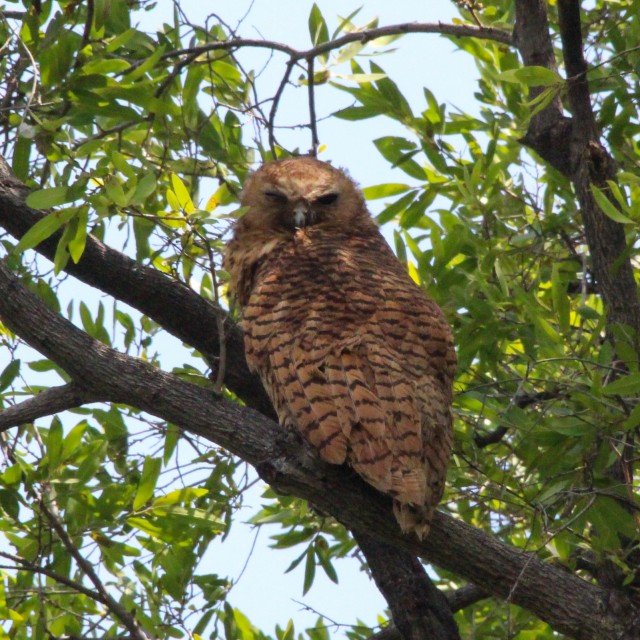
Day 13: Botswana to Mahangu
After an early breakfast we might take a walk to find any species we may have missed, and then we check out and head back north across the border into Namibia.
We are heading to Mahangu Game Park, which offers an incredible number of species for a small park. The 25,000 hectare (60,000 acres) reserve (part of the greater Bwabwata National Park) stretches along the Okavango river floodplain in the western Caprivi and boasts a bird list of over 400 species, including some key Okavango specials. It has been designated an Important Bird Area (IBA) by BirdLife International. There are 3 distinct and different habitats within the reserve. Habitat along the river is a mix of trees, reedbeds, and grassland. Away from the river the habitat is mainly open woodland and in the south the habitat is dry woodland with some dense patches of big trees.
During our time here we hope to see Wattled Crane, Long-toed Lapwing, Slaty Egret, Collared Pratincole, Crimson-breasted Shrike, Violet-eared Waxbill, Verreaux’s Eagle-Owl, Crested Francolin, Yellow-billed Oxpecker, Greater and Lesser Honeyguide, Long-billed Crombec, Gray Tit-flycatcher, Broad-billed Roller, African Fish Eagle, Western Osprey, Brown-necked Parrot, African Cuckoo-Hawk, Ayres’s Hawk-eagle and smaller raptors like Lizard Buzzard, Little and Ovambo Sparrowhawk, and Shikra.
We will check in to our lodge (2-nights) situated on the banks of the Okavango river overlooking Bwabwata National Park just before sunset. Our lodge offers comfortable, thatched, air-conditioned bungalows and very good typical Namibian cuisine. The sunsets from the decks will make for some incredible photographs and indelible memories.

Day 14: Mahangu
We have a full day of exploring to do in this fantastic area. We will start our day with a pre-breakfast birding walk around the lodge where we should see Black Cuckoo, Mourning Collared and Red-eyed Dove, African Green Pigeon, Meves’s and Violet-backed Starling, Brown Firefinch, Woodland Kingfisher, Thick-billed Weaver, Swamp Boubou, Meyer’s Parrot, Hartlaub’s Babbler, White-browed Robin-chat and Southern Yellow White-eye.
Mahangu also offers excellent general game viewing as well and we hope to see the rare and beautiful Sable and Roan Antelope, as well as Tsessebe, African Elephant, African Buffalo, Hippopotamus, Red Lechwe, Greater Kudu, Impala and even Lion, Cheetah, African Wild Dog or Leopard if we are very lucky.
During our time here we will also go on a boat cruise. The timing of this will be determined by what birds we still need to see.

Day 15: Mahangu to Katima Mulilo
Today we head further east along the “Caprivi Strip”, making our way toward the town of Katima Mulilo and beyond. Remember to keep an eye out for birds along the road today, as some very special species have been ticked from moving vehicles here. It’s also a good idea to look for wildlife, as many areas are unfenced and most members of the Big 5 have been seen from this road!
Our lunch stop in Katima Mulilo might produce Northern Gray-headed Sparrow, and Bronze Mannikin. “Katima”, as the locals call it, is the main town in the Caprivi strip (Zambezi region) of northeastern Namibia.
Our lodge tonight is situated in a small riverine forest, on the banks of a tranquil backwater lake of the Zambezi River, approximately 24km east of Katima Mulilo. A deck area offers magnificent views and sunsets leading off the restaurant and bar. Listen and look out for the beautiful Schalow’s Turaco that is often seen around the lodge. Only 15km from the lodge is the largest Southern Carmine Bee-Eater colony in Southern Africa. The birds usually start arriving in the area in November.
Remember to keep an eye out for Common Genet in the grounds after dark, and there could also be Greater Kudu, Impala or even African Elephant nearby. Also remember to look up at the Milky Way on your way to the room after dinner tonight, it really is spectacular out here in the bush!

Day 16: Katima Mulilo to Zambia
After an early cup of coffee while enjoying the Wire-tailed, Lesser Striped and Gray-rumped Swallows, and Brown-throated and Banded Martins flying over the river, we will depart for Zambia, the third and final country of our “NBZ” tour.
We then make our way to our lodge (2-nights) situated on the banks of the Zambezi river just to the west of the town of Livingstone. It is a major tourism centre for the nearby Victoria Falls and was named after Scottish explorer and missionary David Livingstone, who was the first European to explore the area.
Our accommodation for the next two nights is nestled on the banks of the mighty Zambezi, with the river extending the length of the property, offering some breath-taking views over the water. Accommodation is provided in luxury "tented" chalets with en suite facilities.
After settling in and getting acquainted with our surroundings, we will start our birding with a birding walk around the lodge where we will look for Collared Palm Thrush, Red-faced Cisticola, Yellow-breasted Apalis, Orange-breasted Bushshrike, Southern Yellow White-eye, Brown-hooded Kingfisher, Bearded Scrub Robin, Holub’s Golden Weaver, Arrow-marked Babbler, White-browed Coucal, and African Emerald, Jacobin, Red-chested, Levaillant’s, Klaas’s and Diederik Cuckoo.

Day 17: Zambia (Victoria Falls)
We will enjoy a cup of coffee scanning the river hoping to see the resident African Finfoot pair before making our way to Victoria Falls where we will spend the morning enjoying one of the natural wonders of the world and birding in the riverine woodland around the falls.
Victoria Falls – Mosi-oa-Tunya, or “The Smoke that Thunders” is the largest waterfall in the world by volume, a UNESCO World Heritage Site and one of the Seven Natural Wonders of the World. However, no amount of cold facts can prepare you for the sight of the unfathomably vast and powerful body of water that plunges into the Zambezi gorge. It truly is majestic and unforgettable, and a must-see for adventure and wildlife travellers from all over the globe.
We will spend some time staring in awe at the falls, but we won’t forget about the birding. There are several footpaths in the small national park connected to the falls and here we will search for Schalow’s Turaco, Trumpeter Hornbill, White-browed Robin-chat, Red-winged Starling, Terrestrial Brownbul, Yellow-bellied Greenbul, Rock Martin, Rock Pratincole, Northern Gray-headed Sparrow and a variety of water birds. If time allows we might visit the local water treatment works where species like African Rail, African Swamphen, Orange-breasted and Blue Waxbill and several raptors (including Augur Buzzard and Verreaux's Eagle) might be seen.
We will have lunch in town after an exhilarating morning. We will also have another fantastic experience in the afternoon when we do a 3-hour boat cruise on the Zambezi river. On our cruise we hope to see African Skimmer, Rufous-bellied Heron, White-backed Night Heron, African Finfoot, Western Banded Snake Eagle, Dickinson’s Kestrel, and Half-collared, Malachite, Pied and Giant Kingfisher. We will also see Nile Crocodile and Hippopotamus.
We will return to our accommodation and enjoy our farewell dinner and afterwards have our final night of the tour under African skies.

Day 18: End of Tour and Departure
We will enjoy a final breakfast overlooking the mighty Zambezi. Depending on the time of your flight we then transfer you to the Harry Mwanga Nkumbula International Airport at Livingstone for your outward or onward flight. This will be the official end of our superb birding safari in Namibia, Botswana and Zambia.
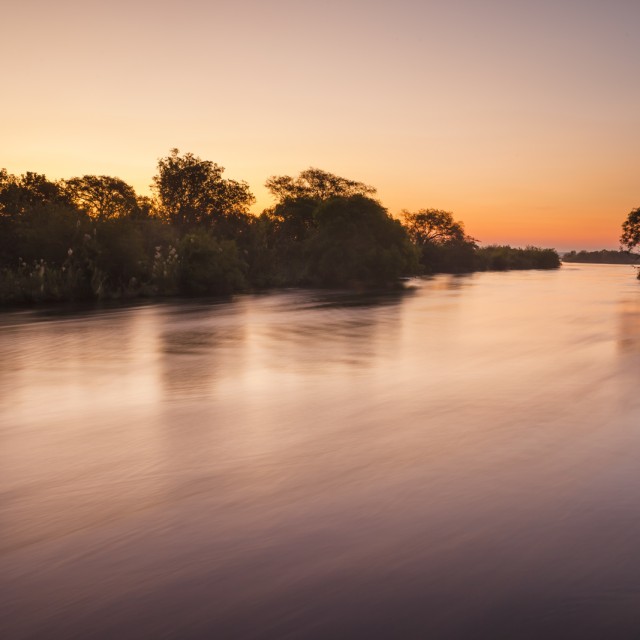
What to Expect
What to Expect
Overview
Our Namibia, Botswana & Victoria Falls birding tour is what some would consider one of the best introductions to birding in Southern Africa, given the easy routes we travel, the friendly people and cultures, breathtaking wildlife encounters, superb accommodation, great photographic opportunities and birding which isn’t at all intense or hard going. In fact, a combination of the scenic sights, smells and sounds of Africa and the incredible biodiversity we will be encountering along the way makes it hard for one not to succumb to a sense of pure, untamed relaxation. There is minimal to no language barrier if speaking English and the vast majority of both countries use this as their median for conversing with one another.
Daily activities
Birding will often commence at first light after the morning’s coffee and tea so as best to maximise the time of day when birds will be most active. Breakfast will either be served back at the lodge, at a local restaurant or as a picnic-type setup by our guide whilst you continue to enjoy the avian spectacle around you. Midday will generally see us finding time for the group to rest during the heat of the day and take a break from what can be moderately high temperatures [+-36 to 38 degrees Celsius] with minimal humidity during November. This is a great opportunity for clients to refresh, download and sort through pictures or prepare their equipment for the afternoon session. Remember, it will be the Southern Hemisphere Summer and being a largely arid desert environment temperatures during the day can get hot whilst the evenings prove to be the opposite and become rather chilly (pack a jumper or jacket to be safe!). Lunch options will be similar to those for breakfast, followed by further time spent in the field. Evenings will be enjoyed relaying stories and highlights from the day over a superb dinner as your guide takes you through the daily bird list and discusses any queries you may have.
Walking
Birding in general is easy with the occasional short distances of light walking. Most walking is around the lodge or birding area on level terrain. There are no long walks and clients with limited walking ability can be accommodated.
Driving
We will travel in safari type vehicles with 6 window seats. When travelling between locations drives may be between 3-7 hours. Some days we will have little to no driving.
Boat trips
We take a few boat trips on this tour as outlined in the itinerary. We use motorboats and the cruises are usually around 3 hours in length. There are no washroom facilities onboard.
Featured Wildlife
Featured Wildlife
While we cannot guarantee sightings of the birds or mammals listed below, we believe that encountering these species is quite likely during this tour.
- Pel’s Fishing Owl
- Western Banded Snake Eagle
- White-backed Night Heron
- Slaty Egret
- Damara Tern
- Wattled Crane
- Rockrunner
- African Skimmer
- Dune and Gray’s Lark
- Hartlaub’s Spurfowl
- Bradfield’s, Damara Red-billed and Monteiro’s Hornbill
- African Elephant, African Buffalo, Lion, Leopard, White & Black Rhinoceros (Africa’s Big Five)
- African Wild Dog
- Cheetah
- Sable and Roan Antelope
- Gemsbok
Past Tour Checklists
Past Tour Checklists
View the list of birds and other wildlife we encountered on our past tours.
- Namibia, Botswana, Victoria Falls species list 2018
- Namibia, Botswana, Victoria Falls species list 2017
- Namibia, Botswana, Victoria Falls species list 2016
- Namibia, Botswana, Victoria Falls bird species list 2012
- Namibia, Botswana, Victoria Falls mammal list 2012
- See More...
- Namibia, Botswana, Victoria Falls species list 2008
- Namibia, Botswana, Victoria Falls species list 2004




